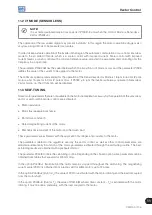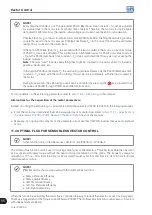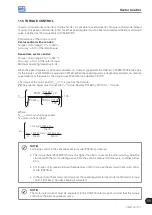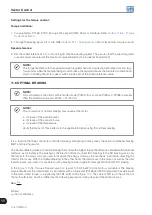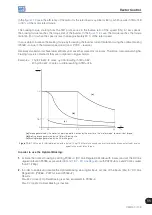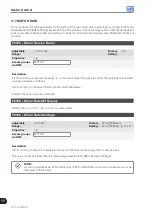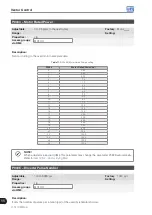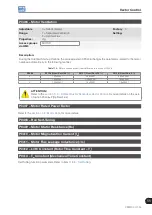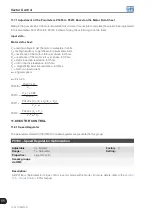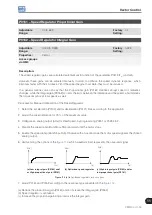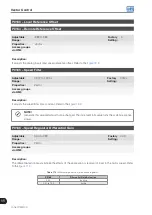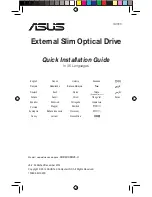
Vector Control
11
CFW700 | 11-1
11 VECTOR CONTROL
It consists in the control type based on the separation of the motor current into two components:
Flux producing current I
d
(oriented with the motor electromagnetic flux).
Torque producing current I
q
(perpendicular to the motor flux vector).
The I
d
current is related to the motor electromagnetic flux, while the I
q
current is directly related to the torque
produced at the motor shaft. With this strategy one gets the so called decoupling, i.e., one can control the motor
flux and torque independently by controlling the I
d
and I
q
currents respectively.
Since these currents are represented by vectors that rotate at the synchronous speed, when observed from a
stationary referential, a referential transformation is done so that they are changed to the synchronous referential.
In the synchronous referential these values become DC values proportional the respective vector amplitudes. This
simplifies considerably the control circuit.
When the I
d
vector is aligned with the motor flux, it can be said that the vector control is orientated. Therefore it
is necessary that the motor parameters be correctly adjusted. Some of those parameters must be programmed
with the motor nameplate data and others obtained automatically through self-tuning or from the motor data sheet
supplied by the manufacturer.
presents the block diagram for the vector control with encoder and the
vector control. The information of the speed, as well as of the currents measured by the inverter, will be used to
obtain the correct vector orientation. In the vector with encoder control case, the speed is obtained directly from
the encoder signal, while in the sensorless vector control there is an algorithm which estimates the speed, based
in the output currents and voltages.
The vector control measures the current, separates the flux and torque portions and transforms these variables to
the synchronous referential. The motor control is accomplished by imposing the desired currents and comparing
them with the actual values.
11.1 SENSORLESS CONTROL AND WITH ENCODER
The Sensorless Vector Control is recommended for the majority of the applications, because it allows the operation
in a speed variation range of 1:100, speed control with 0.5 % accuracy of rated speed, high starting torque and
fast dynamic response.
Another advantage of this control type is the greater robustness against sudden line voltage and load changes,
avoiding unnecessary overcurrent trips.
The necessary settings for the good operation of the sensorless vector control are done automatically. Therefore
the used motor must be connected to the CFW700 inverter.
Summary of Contents for CFW700
Page 2: ......
Page 4: ......
Page 8: ...Summary...
Page 34: ...2 General Information 2 4 CFW700...
Page 38: ...3 About the CFW700 3 4 CFW700...
Page 56: ...7 Starting up and Settings 7 4 CFW700...
Page 58: ...8 Available Control Types 8 2 CFW700...
Page 78: ...10 VVW Control 10 8 CFW700...
Page 158: ...13 Digital and Analog Inputs and Outputs 13 28 CFW700...



















